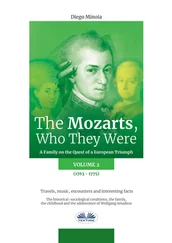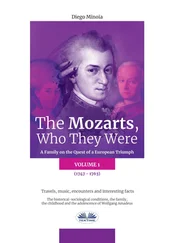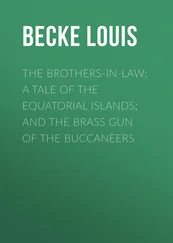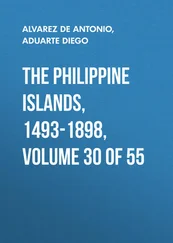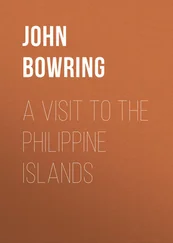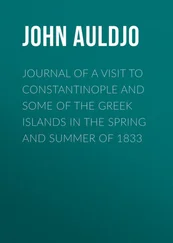Diego Aduarte - The Philippine Islands, 1493-1898 - Volume 32, 1640
Здесь есть возможность читать онлайн «Diego Aduarte - The Philippine Islands, 1493-1898 - Volume 32, 1640» — ознакомительный отрывок электронной книги совершенно бесплатно, а после прочтения отрывка купить полную версию. В некоторых случаях можно слушать аудио, скачать через торрент в формате fb2 и присутствует краткое содержание. Жанр: foreign_antique, foreign_prose, Историческая проза, на английском языке. Описание произведения, (предисловие) а так же отзывы посетителей доступны на портале библиотеки ЛибКат.
- Название:The Philippine Islands, 1493-1898: Volume 32, 1640
- Автор:
- Жанр:
- Год:неизвестен
- ISBN:нет данных
- Рейтинг книги:4 / 5. Голосов: 1
-
Избранное:Добавить в избранное
- Отзывы:
-
Ваша оценка:
- 80
- 1
- 2
- 3
- 4
- 5
The Philippine Islands, 1493-1898: Volume 32, 1640: краткое содержание, описание и аннотация
Предлагаем к чтению аннотацию, описание, краткое содержание или предисловие (зависит от того, что написал сам автор книги «The Philippine Islands, 1493-1898: Volume 32, 1640»). Если вы не нашли необходимую информацию о книге — напишите в комментариях, мы постараемся отыскать её.
The Philippine Islands, 1493-1898: Volume 32, 1640 — читать онлайн ознакомительный отрывок
Ниже представлен текст книги, разбитый по страницам. Система сохранения места последней прочитанной страницы, позволяет с удобством читать онлайн бесплатно книгу «The Philippine Islands, 1493-1898: Volume 32, 1640», без необходимости каждый раз заново искать на чём Вы остановились. Поставьте закладку, и сможете в любой момент перейти на страницу, на которой закончили чтение.
Интервал:
Закладка:
Chapter VI
The great devotion in Japon to the rosary of our Lady; the death of the emperor, and the state of the church there
[In the beginning of the year 1616, the confraternity of our Lady of the Rosary, which had been established in 1602, when the order of our father St. Dominic entered Japon, was very greatly increased, and the devotion to the rosary became much more intense. This order and the devotion connected with it spread from Nangasaqui through all parts of Japon, and much improvement in the lives of those who devoted themselves to the rosary was perceived. Miraculous strength was also given to the members of the confraternity to hold to their faith. In July the emperor died by poison, which was given him by mistake from a box of medicine. The emperor being succeeded by his son, Xogunsama, 16 16 i. e. , “the lord shogun;” it is only a title of honor, not a personal name. It here refers to Hidetada, who had been associated with his father Iyeyasu in the government.
the persecution was continued, and even increased in severity, the officers exerting themselves to invent ingenious tortures. Sometimes the very tormentors themselves, though they did not abandon their idolatry, were compelled by the virtue of the martyrs, and the aid rendered them by the Lord, to admit the truth of our holy faith. Particulars are given of the deaths of a number of martyrs. In course of time the persecution extended to Nangasaqui. It was discovered by accident that there were religious in the city. This was one cause for the beginning of the persecution. Another cause was the contentions of two governors in the city, one Christian and the other heathen. 17 17 Later (at the beginning of chap. xiiii) Aduarte states that under Safioye were two officials in charge of the Nagasaki government – Antonio Toan, a Christian; and Feizó, a renegade Christian. After Safioye’s death, dissensions arose between these two; and finally the emperor made Feizó and Gonrozu (a nephew of Safioye) joint governors of the city, who proceeded to persecute the Christians with renewed severity.
Great efforts being made to capture some of the religious, father Fray Pedro de la Asumpcion of the Order of St. Francis, and Father Juan Baptista Tavora of the Society, were caught and suffered martyrdom, being decapitated May 22, 1617. This caused great joy among the religious, who had feared that, if they should be captured, they would merely be sent out of the kingdom, but were now encouraged to hope for the crown of martyrdom.]
Chapter VII
The expedition of father Fray Alonso Navarrete, vicar-provincial of our order in Japon, and father Fray Hernando de San Joseph, or Ayala, vicar-provincial of the order of our father St. Augustine, for the aid of the Christians of Omura
[The persecutors were satisfied with these deaths, thinking that they would frighten the ministers of the gospel and either drive them out of Japon or greatly curtail their activity. May 24, 1617, on the eve of Corpus Christi, father Fray Alonso Navarrete, vicar-general of our order, set out for Omura, where the other priests had been martyred, with the purpose of openly preaching the gospel there. He took with him a courageous Japanese servant named Pablo. The landlord of his house also volunteered. Father Fray Hernando de San Joseph, vicar-provincial of the Augustinian order, who was his close friend, decided to accompany him. After examining their consciences carefully, father Fray Francisco de Morales of our order approved their enterprise.]
Chapter VIII
The capture of the holy martyrs
[The two fathers set out, traveling slowly, encouraging the Christians and recovering some of those who had recanted. The number of those who came to be confessed was very great, and the religious heard their confessions at the risk of their lives. The fathers rejoiced to lay aside their secular garments; and the Christians who saw them in religious habits were greatly delighted. Five persecutors came to arrest the fathers, who received them with great joy and gave them presents. Father Fray Alonso wrote a letter to the tono, informing him that the fathers had come to give him an opportunity to repent of his great sin in martyring the fathers who had been executed, and to deliver him from the pains of hell. Some Japanese boldly offered themselves for martyrdom. The Christian inhabitants of the city showed the greatest devotion to the fathers, crowding about them and offering themselves for martyrdom with them; and they showed the greatest grief at the thought that the fathers were to be taken from them by death. The tono of Omura was in the greatest grief and perplexity, feeling that there would fall on him the obligation to martyr Christians after Christians who would come to offer themselves in his kingdom. He finally determined to take their lives, but with the greatest secrecy, in order to prevent an uprising in the city. The fathers were accordingly taken to a desolate island named Usuxima; and in spite of the efforts of the heathen to keep the place secret, they were followed by a great number of Christians, who confessed to them.]
Chapter IX
The death of the three holy martyrs
[From this island the three fathers were removed to another named Coguchi. They received with great joy the news that they were to die, and were carried to another island still more solitary. Here they showed great courtesy and kindness to those who were to slay them. They left letters for their provincials, desiring them to send religious to Japon at any cost. In spite of the care of the tyrant, some Christians were present at the execution. The two were beheaded on Thursday, the first of June, the octave of Corpus Christi. Their very executioners looked upon them at such men of virtue that they dipped their handkerchiefs and bits of paper in their sacred blood, to keep these as relics. The bodies of all the martyrs were put in coffins laden with stones, and cast into the sea. In spite of the danger, many Japanese went to the place of the martyrdom to venerate the relics of these saints; and the Confraternity of the Rosary offered continual prayers that they might recover the bodies of these holy martyrs. At the end of two months the bodies of the holy and blessed Fray Pedro de la Asumpcion and Fray Hernando were cast up on the shore.]
Chapter X
The virtues of these blessed fathers, their fitness to obtain the crown of martyrdom, and the fruits which followed therefrom
[The holy Fray Hernando was especially devoted to the souls in purgatory, and gave a notable example of poverty and obedience to the rules of his order. Father Fray Alonso was very pious, almsgiving, and compassionate. Although the lords in Japon are very rich, the poor people are very needy; so that the heathen often slay their new-born children, and the Christians cast them out in the street. The heart of the holy man was so afflicted by this that, at his persuasion, a Spanish captain named Pablo Carrucho settled a certain income upon the pious work of maintaining these children. Just before his death the holy martyr, not forgetful of this, wrote a letter to the captain, urging him not to forget the alms for the exposed children. Father Fray Alonso was one of the first ministers of Nueva Segovia; he returned to Europe, to bring with him a number of new religious to the Philippinas. After he had been assigned to Japon he once returned to the Philippinas. He suffered greatly in these voyages, since he was of delicate constitution. He was a charitable and most beloved minister, very bold, and especially distinguished for his gratitude. From this martyrdom the Christians of Nangasaqui received new courage, as did also those of Omura, who were greatly strengthened in the faith. Some, indeed, who had feared to do so before, boldly confessed Christianity. Throughout Japon the example of this martyrdom was a great source of strength to the Christians, and forced the heathen to respect the Christian faith. The heathen also were cured of their error of supposing that the fathers had come to this region because of temporal ambitions. The persecution which was feared in Nangasaqui ceased when the courage of the holy men was seen. The last result of this martyrdom was the many more martyrdoms, which soon followed, of those who by the example of these saints openly avowed Christianity. The names of several of the confessors and martyrs are given, with a brief account of their deaths.]
Читать дальшеИнтервал:
Закладка:
Похожие книги на «The Philippine Islands, 1493-1898: Volume 32, 1640»
Представляем Вашему вниманию похожие книги на «The Philippine Islands, 1493-1898: Volume 32, 1640» списком для выбора. Мы отобрали схожую по названию и смыслу литературу в надежде предоставить читателям больше вариантов отыскать новые, интересные, ещё непрочитанные произведения.
Обсуждение, отзывы о книге «The Philippine Islands, 1493-1898: Volume 32, 1640» и просто собственные мнения читателей. Оставьте ваши комментарии, напишите, что Вы думаете о произведении, его смысле или главных героях. Укажите что конкретно понравилось, а что нет, и почему Вы так считаете.



